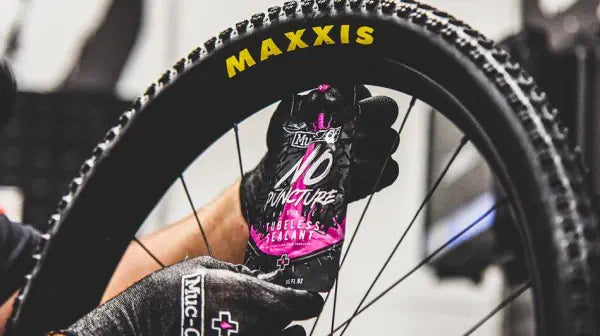
Exploring the Pros and Cons of Tubeless Tyres on Electric Bikes
Electric bikes are becoming increasingly popular as a sustainable and efficient mode of transportation for commuting and leisure. With this rise in popularity, there’s a growing interest in optimising e-bike performance and comfort. One such optimisation is the use of tubeless tyres. While they offer several tangible benefits, it’s important to understand there are some compromises too, maybe too many for some riders. Here’s an in-depth look at the advantages and disadvantages of tubeless tyres on electric bikes so you can decode if they are what you need.
What is a tubeless tyre?
A tubeless tyre, to the untrained eye, looks like a standard tube-type clincher tyre but requires no inner tube and, once ‘seated’ (seating is the process of snapping the beads into position), it forms an airtight seal on the rim. Various tyre manufacturers usually indicate their tyres are tubeless compatible by annotating the tyre name to reflect it. For example, Schwalbe use the acronym TLE on their tyre names which meanse Tubeless-Easy
A valve just like the one you’d find on an inner tube is securely fitted directly to the rim.
For the system to work, neither can leak air, so the tyre needs to fit tightly to the rim.
Tubeless tyre sealant is added to seal any small air leaks. Puncture protection is achieved by inertia of the wheel coating the inside of tyre with sealant. If a puncture occurs, the air pressure inside the tyre forces out a small bead of sealant that hardens and seals the hole when it hits the air. Air-loss is minimal.
Advantages of Tubeless Tyres
1. Puncture Resistance
Tubeless tyres are less susceptible to punctures than traditional tyres with tubes. The absence of a tube means no pinch flats, and the sealant used in tubeless tyres can quickly seal small punctures, keeping you riding without interruption.
2. Ride Comfort
Running lower tyre pressures without the risk of pinch flats results in a more comfortable ride. This is especially beneficial offroad where tyres can soak up bumpy trails better.
3. Improved Traction
Lower pressures allow for a larger tyre contact area with the ground, which means better traction. This can be particularly advantageous for eMTB’s, which have more torque and can benefit from the extra grip during acceleration and on slippery surfaces.
4. Weight Reduction
Removing the inner tube shaves off some weight, contributing to a lighter bike. This can improve handling on lightweight ebikes on the road and potentially extend the range of the e-bike by requiring less power to move.
5. Durability
Tubeless tyres are generally tougher and more durable, designed to withstand the demands of riding without a tube, which means they can better resist damage from road debris and rough terrain.
Further Reading
- How to setup tubeless tyres
- Ebike Tyres and Tubes – Explained
- Electric Bikes vs Traditional Bikes: Which is Greener?
Disadvantages of Tubeless Tyres
1. Initial Setup
Setting up tubeless tyres can be more complex and time-consuming than traditional tyres. It often requires special equipment like an air-compressor or special pump to seat the tyre beads and can be messy due to the sealant.
2. Maintenance
While tubeless tyres are less prone to punctures, they do require regular maintenance. The sealant needs to be checked and topped up every few months, and the tyres themselves may need more frequent inspection to ensure they are sealed properly.
3. Difficult Repairs
When a tubeless tyre does get a significant puncture or tear that the sealant can’t fix, repairing it can be more challenging than simply replacing a tube.
4. Compatibility
Not all rims are tubeless-ready, and converting non-compatible rims can be costly and, in some rare cases, not always successful.
5. Cost
Tubeless tyres and the necessary setup equipment are generally more expensive upfront compared to traditional tyres and tubes.
Conclusion
Tubeless tyres on electric bikes offer a range of benefits that can enhance the riding experience, from improved comfort to better traction and puncture resistance. However, they also come with drawbacks, such as the faff of setup, cost, ongoing maintenance, and potential repair difficulties. When considering switching to, take these factors to into account.
In my opinion, leave tubeless to eMTB’s with high volume (wide) tyres where traction is a biggy. For road and leisure cyclists tubes are just simpler, easier and less faff. If puncture resistance is your main worry, I’d recommend fitting tyres with better puncture resistance and sealant pre-filled tubes for peace of mind and a belts n braces approach.
